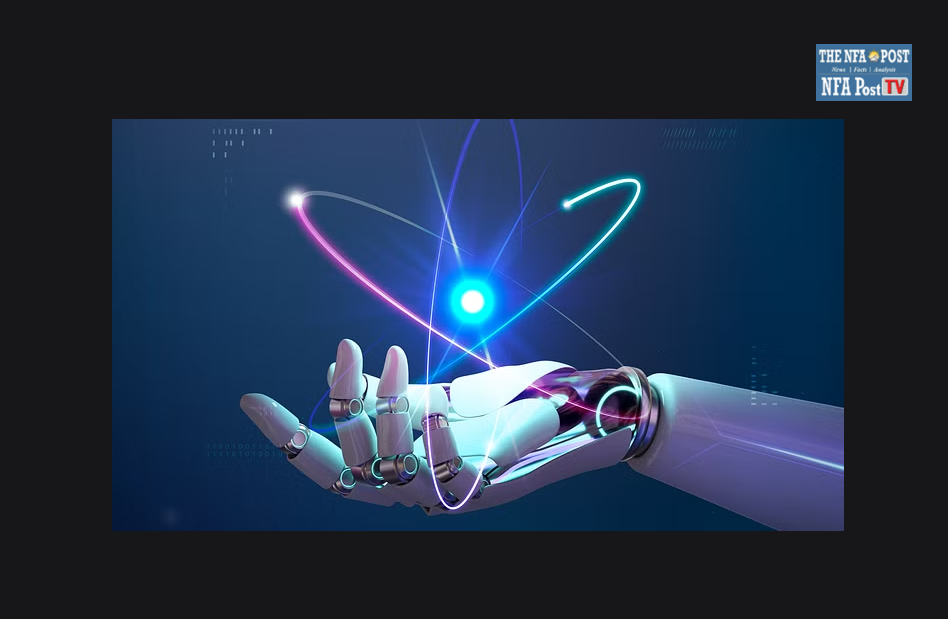The technologies featured in the Top 10 Emerging Technologies Report 2023 have the greatest potential to positively impact the world
Bengaluru, NFAPost: Generative AI, sustainable aviation fuel, and flexible batteries are among the top emerging technologies in the World Economic Forum’s annual list of breakthrough technologies with the greatest potential to positively impact the world in the next 3-5 years.
The technologies featured in the Top 10 Emerging Technologies Report 2023, produced in collaboration with Frontiers, are chosen by a group of experts against several criteria. In addition to promising major benefits to societies and economies, they must also be disruptive, attractive to investors and researchers, and expected to have achieved considerable scale within five years.
“New technologies have the power to disrupt industries, grow economies, improve lives and safeguard the planet – if designed, scaled and deployed responsibly,” said Jeremy Jurgens, managing director of the World Economic Forum and head of the Centre for the Fourth Industrial Revolution.
Since the first edition in 2011, the report has identified little-known technologies that went on to have a global impact. These include genomic vaccines, which were featured in the 2016 report and later became the technology underpinning most Covid-19 vaccines, and AI-led molecular design, featured on the 2018 list two years before the first AI-discovered drugs entered clinical trials.
The top 10 emerging technologies of 2023 are:
1. Flexible batteries: Standard rigid batteries may soon be a thing of the past as thin, flexible batteries – made of lightweight materials that can be twisted, bent and stretched – reach the market. This new generation of battery technology – expected to hit a market value of $240 million by 2027 – has applications across medical wearables, biomedical sensors, flexible displays and smartwatches.
2. Generative artificial intelligence: This year’s list would not be complete without mentioning generative AI – a new type of AI capable of generating new and original content by learning from large datasets that were catapulted into public dialogue at the end of 2022 with the public release of ChatGPT. Evolving rapidly, generative AI is set to disrupt multiple industries, with applications in education, research and beyond.
3. Sustainable aviation fuel: With 2-3 per cent of annual global CO2 emissions coming from aviation, and no sign of long-haul electric flights, sustainable aviation fuel produced from biological (e.g. biomass) and non-biological (e.g. CO2) sources could be the answer to decarbonize the aviation industry in the short to medium term.
4. Designer phages: Phages are viruses that selectively infect specific types of bacteria. Equipped with increasingly sophisticated genetic engineering tools, scientists can now reprogramme phages to infect the bacteria of their choosing, allowing them to target one type of bacteria in a complex community of co-existing types of bacteria such as in plant, animal and human microbiomes. Though many of the near-term applications will be in research, there are signs these “designer” phages could eventually be used to treat microbiome-associated diseases or eliminate dangerous bacteria in food supply chains.
5. Metaverse for mental health: Responding to the growing mental health crisis, product developers are starting to build shared virtual spaces to improve mental health. Video games are already being used to treat depression and anxiety, and VR-enabled meditation is rising. Combined with next-generation wearables that allow the user to feel touch and or respond to the user’s emotional state, the future metaverse could be ripe for improving mental health.
6. Wearable plant sensors: Drones and satellites have been game changers in monitoring large-scale farms traditionally relying on manual soil testing and visual observations. Now we have a new generation of plant sensors – small, non-invasive devices that individual plants can “wear” to continuously monitor temperature, humidity, moisture and nutrient levels. Assuming they can overcome scaling costs, wearable plant sensors could improve plant health and increase yields.
7. Spatial omics: By combining advanced imaging techniques with the specificity of DNA sequencing, spatial omics allows scientists to “see” biological processes at the molecular level inside cells. This powerful new technology is poised to speed up our understanding of biology and help researchers develop new treatments for complex diseases by revealing previously unobservable biological structures and events.
8. Flexible neural electronics: Brain-machine interfaces allow direct communication between the brain and external computers. They have potentially life-changing applications in medicine and neuroscience, such as treating epilepsy, depression or paralysis. So far, the technology has been based on rigid electronics and limited by the mechanical and geometrical mismatch with brain tissue. But breakthroughs in flexible electronics and more biocompatible materials mean a less invasive and uncomfortable patient experience. The $1.74 billion market for this technology is expected to grow to $6.18 billion by the decade’s end.
9. Sustainable computing: Data centres consume approximately 1 per cent of the electricity produced globally. Multiple technologies are intersecting to make the dream of net-zero-energy data centres an achievable reality. Bucketed together as “sustainable computing” technologies, they include liquid cooling systems, AI analytics and modular data centres that can be co-located with existing energy sources such as methane flares.
10. AI-facilitated healthcare: From diagnostics to drug design, AI has been widely reported as an enabler of better healthcare. The application pulled out in this report goes one step higher and focuses on the role of AI in supporting the entire healthcare system – from monitoring pandemic outbreaks to reducing hospital wait times by optimizing resource allocation.





